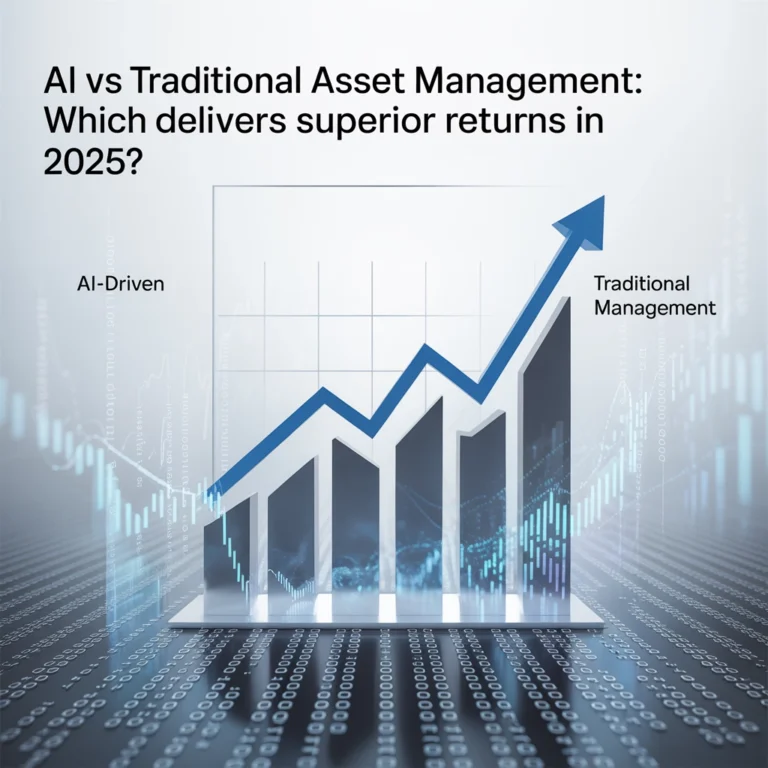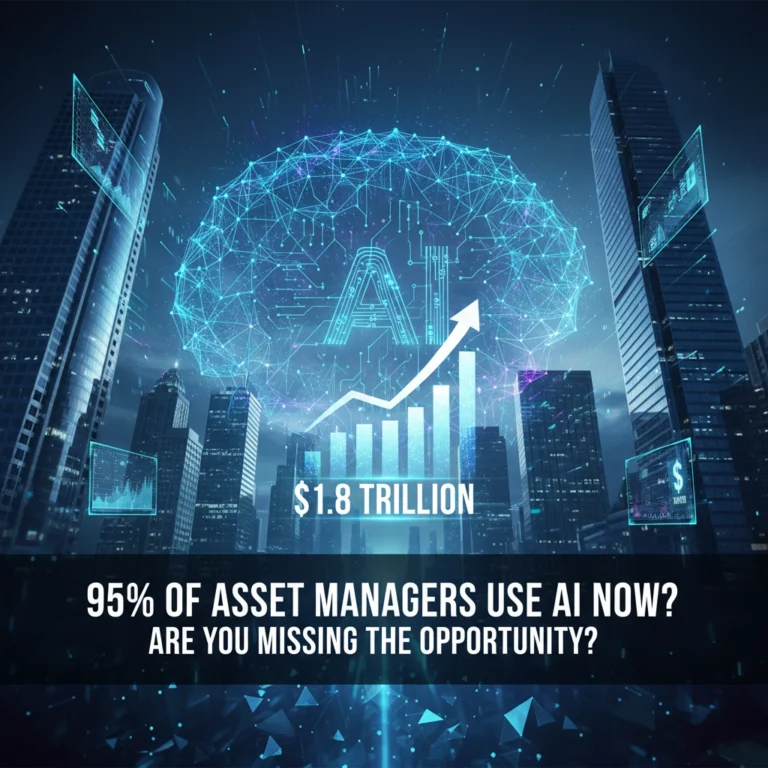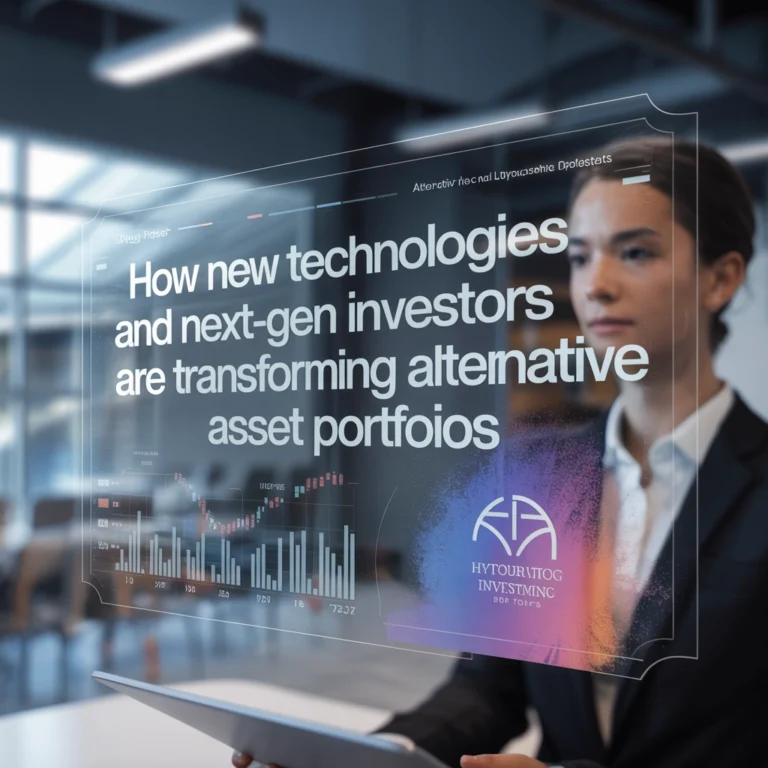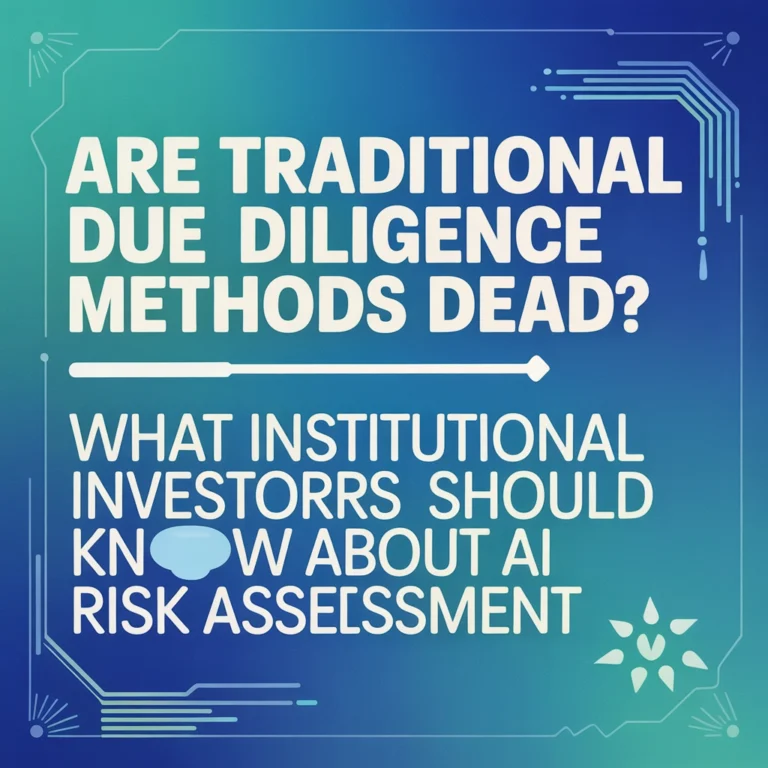Harnessing AI for Smarter Risk Management in Alternative Investing
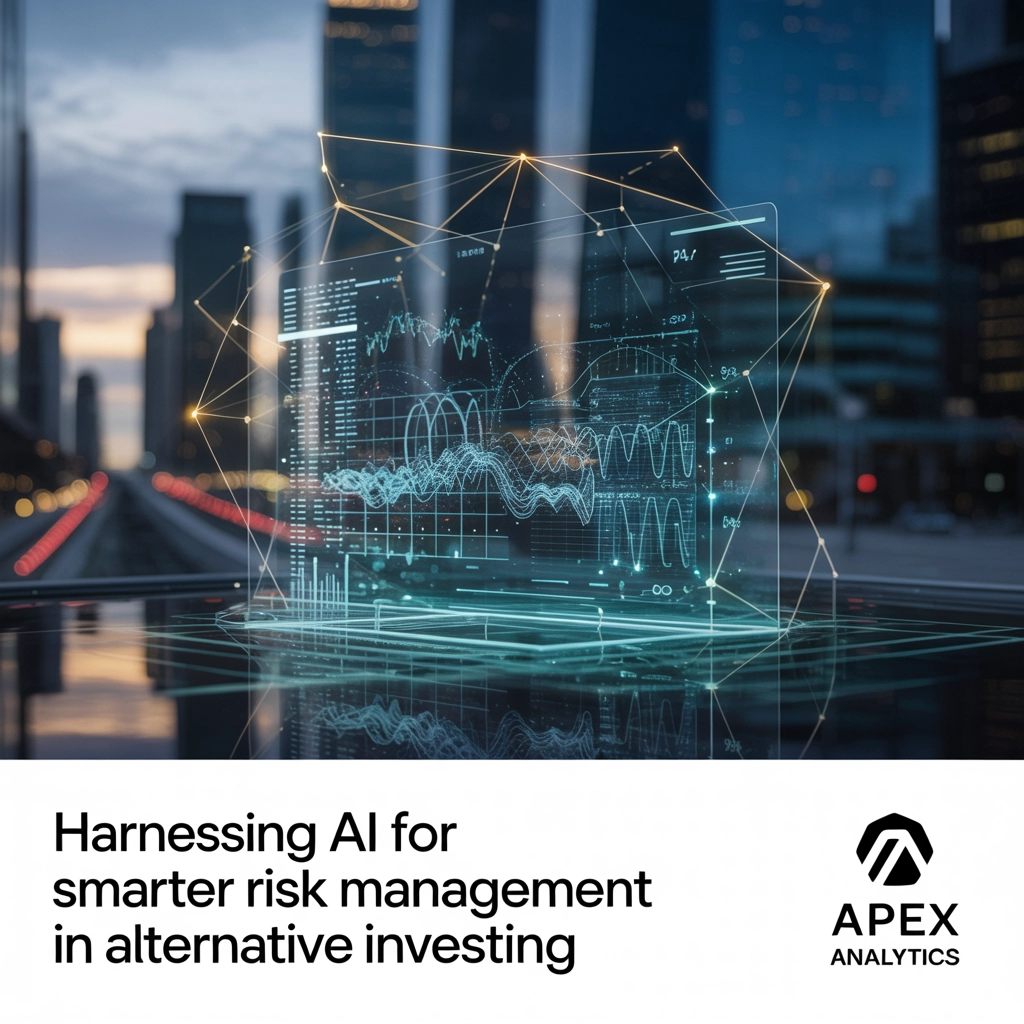
The alternative investment landscape has evolved dramatically over the past decade. From private equity and hedge funds to real estate and commodities, these assets now represent a significant portion of institutional portfolios. Yet despite their growing importance, traditional risk management approaches often fall short when dealing with the complexities of alternative investments.
Here's the reality: conventional risk models were built for a different world—one dominated by liquid, publicly traded securities with abundant data and transparent pricing. Alternative investments operate by entirely different rules, presenting unique challenges that demand innovative solutions.
Enter artificial intelligence. AI is revolutionizing how we approach risk management in alternative investing, offering sophisticated analytical capabilities that far exceed traditional methods. But this isn't just about deploying the latest technology—it's about fundamentally transforming how we identify, measure, and respond to risk across complex portfolios.
The Traditional Risk Management Gap
Most risk management frameworks were designed with stocks and bonds in mind. These assets offer consistent pricing data, reliable market benchmarks, and well-established correlations. Traditional models rely on metrics like volatility, value-at-risk (VaR), and beta—all of which work reasonably well in liquid markets.
But alternative investments break these assumptions. Consider private equity holdings that might not be valued for months, or real estate assets influenced by hyperlocal factors that don't show up in standard databases. Hedge funds employ complex strategies that can shift dramatically based on market conditions. Commodities face supply chain disruptions, geopolitical tensions, and storage constraints that traditional models simply can't capture.

Without uniform data availability, standard risk assessment tools produce unclear results. Key metrics become significantly less reliable, creating substantial blind spots in portfolio analysis. Investors may unknowingly assume more risk than intended while lacking the proper tools to evaluate their alternative holdings' unique characteristics.
This gap has real consequences. During market stress, correlations that appeared stable under traditional models can spike unexpectedly. What looked like a well-diversified portfolio might suddenly reveal concentrated risks that weren't visible through conventional analysis.
AI-Powered Risk Revolution
Artificial intelligence addresses these challenges head-on by processing vast amounts of diverse data types simultaneously. Unlike traditional models that rely on historical price patterns, AI systems can incorporate financial metrics, operational data, market sentiment, regulatory changes, and even satellite imagery to build comprehensive risk pictures.
Machine learning algorithms excel at identifying patterns and correlations that remain hidden to traditional analytical approaches. For alternative assets like precious metals, AI can track multifaceted signals affecting values—from central bank policies and inflation trends to supply chain disruptions and geopolitical developments. This comprehensive analysis enables more accurate risk predictions and timely decision-making.
The real power lies in AI's ability to adapt continuously. Rather than relying on static models that assume past relationships will continue, machine learning systems evolve as new data becomes available. They can detect regime changes in market behavior and adjust risk assessments accordingly.
Dynamic Portfolio Optimization in Action
One of AI's most valuable contributions is dynamic portfolio optimization. Traditional asset allocation typically involves periodic rebalancing based on predetermined rules or manual intervention. AI transforms this process through continuous assessment of asset relationships, risk factors, and macroeconomic trends.
These systems can adjust portfolio allocations in real-time, optimizing performance while mitigating downside risk. This capability proves particularly valuable in alternative investment markets, where assets tend to be illiquid and data more complex. AI can identify optimal entry and exit points for positions that might otherwise be held based on intuition or outdated analysis.

AI-driven backtesting allows investors to simulate different strategies across various market conditions, ensuring robustness before capital deployment. This approach strengthens risk management frameworks while potentially enhancing returns through more strategic portfolio diversification.
Cutting-Edge Technologies Reshaping Risk Management
Several emerging AI technologies are particularly promising for alternative investment risk management:
Graph Neural Networks (GNNs) represent an advanced architecture that models complex relationships in interconnected systems. In alternative investing, GNNs analyze relationships between counterparties, markets, and asset classes to identify potential contagion paths. This enables more effective systemic risk management and supports comprehensive stress testing for systemic events.
Reinforcement Learning algorithms learn optimal strategies through trial-and-error in dynamic environments. These systems show particular promise for automatically adjusting risk allocations in response to changing market conditions, potentially outperforming static approaches in pursuit of superior risk-adjusted returns.
Generative AI technologies like advanced language models can translate human language and extract specific data from investment documents, automating previously manual processes. This capability enables more comprehensive portfolio analysis while freeing asset managers to focus on strategic functions.
Real-World Applications and Benefits
AI's practical applications in alternative investment risk management extend across multiple dimensions:
Real-Time Risk Monitoring: AI systems provide continuous monitoring that detects unusual activity and transaction patterns as they occur. By analyzing account behavior and market dynamics, these systems can flag anomalies that might indicate emerging risks, enabling early intervention.
Advanced Stress Testing: AI-powered stress testing assesses investment resilience under various adverse scenarios—economic downturns, market volatility, supply chain disruptions, and geopolitical tensions. These sophisticated simulations help managers prepare for diverse market environments.

Enhanced Due Diligence: For private market investments, AI can analyze vast amounts of unstructured data—from management presentations and financial statements to news articles and social media sentiment. This comprehensive analysis provides deeper insights into potential investments and their associated risks.
Liquidity Risk Assessment: Alternative investments often face complex liquidity constraints. AI can model liquidity scenarios across different market conditions, helping managers understand when and how they might access capital from various holdings.
Implementation Strategy and Considerations
Successfully implementing AI-driven risk management requires careful consideration of both technical and organizational factors. The most effective approaches combine AI-driven insights with seasoned industry experience rather than attempting to replace human judgment entirely.
Data quality remains crucial. AI systems are only as good as the information they process, and alternative investments often involve incomplete or inconsistent data. Successful implementations invest heavily in data collection, cleaning, and validation processes.
Transparency and explainability are essential, especially for institutional investors who need to understand and justify their risk management decisions. AI systems should provide clear explanations of their recommendations and the factors driving their analysis.
Risk management teams need training and support to work effectively with AI tools. This isn't about replacing human expertise but augmenting it with more sophisticated analytical capabilities.
Looking Ahead: Ethical AI and Future Developments
As AI adoption accelerates in alternative investing, addressing ethical considerations becomes paramount. This includes managing algorithmic bias, ensuring accountability through human oversight, and establishing collaborative frameworks between institutions, regulators, and advocacy groups.
The integration of AI into alternative investment risk management represents a fundamental shift toward more sophisticated, proactive approaches. Rather than simply reacting to risks after they materialize, AI enables predictive risk management that can identify and address challenges before they impact portfolios.
For forward-thinking investment managers, the question isn't whether to embrace AI-driven risk management—it's how quickly they can implement these capabilities while maintaining the human insight and experience that remain crucial for success in alternative markets.
The future of alternative investment risk management lies in this powerful combination of artificial intelligence and human expertise, creating more resilient portfolios and better outcomes for investors navigating increasingly complex markets.


